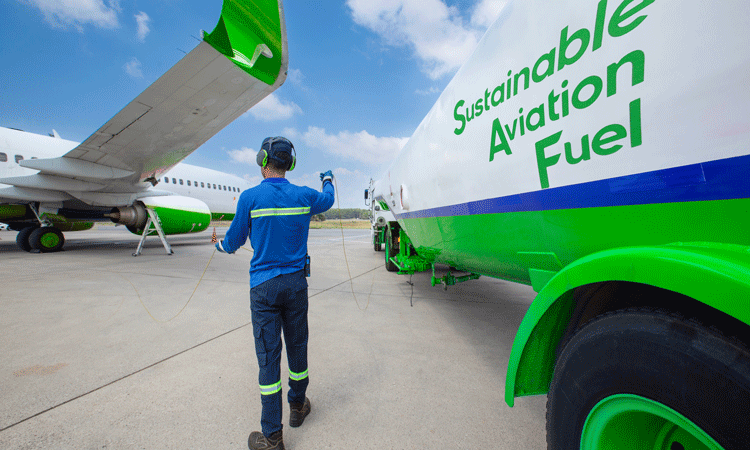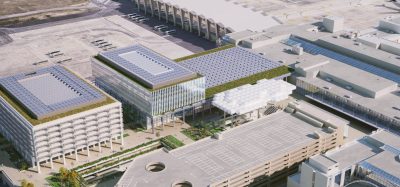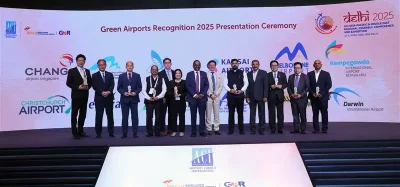Sustainable aviation fuel explained
- Like
- Digg
- Del
- Tumblr
- VKontakte
- Buffer
- Love This
- Odnoklassniki
- Meneame
- Blogger
- Amazon
- Yahoo Mail
- Gmail
- AOL
- Newsvine
- HackerNews
- Evernote
- MySpace
- Mail.ru
- Viadeo
- Line
- Comments
- Yummly
- SMS
- Viber
- Telegram
- Subscribe
- Skype
- Facebook Messenger
- Kakao
- LiveJournal
- Yammer
- Edgar
- Fintel
- Mix
- Instapaper
- Copy Link
Posted: 23 April 2025 | International Airport Review | No comments yet
Sustainable aviation fuel is a cleaner alternative to traditional jet fuel, but challenges hinder its widespread use in aviation, an industry that contributes 2.5% of the world’s CO2 emissions.


What is sustainable aviation fuel?
Sustainable aviation fuel (SAF) is a type of jet fuel produced from renewable feedstocks such as used cooking oils, plant oils, agricultural waste and municipal waste. Unlike conventional jet fuel derived from fossil sources, SAF is considered a more sustainable alternative as it significantly reduces carbon emissions produced during flights. Depending on the feedstock and production method, SAF can reduce carbon emissions by up to 80% compared to traditional fossil fuels.
Chemically similar to conventional jet fuel, SAF can be used in existing aircraft engines without requiring modifications. It can be blended with traditional fuel up to 50%, and looking ahead, aircraft will be capable of using 100% SAF by 2030. The term ‘drop-in fuel’ refers to SAF’s compatibility with current airport fuelling systems, making its integration into the aviation industry relatively straightforward.
The environmental benefits of SAF are substantial, notably its reduction of carbon dioxide (CO2) emissions. Additionally, using waste materials like household rubbish for fuel production helps prevent these materials from ending up in landfills, reducing harmful methane emissions.
While SAF is currently more expensive than traditional jet fuel, its cost is expected to decrease as production technologies improve and economies of scale are achieved. SAF plays a crucial role in helping the aviation industry meet its carbon reduction targets of net zero by 2050, contributing to a more sustainable future for the aviation industry.
As Cherie Wilson, Delta’s Vice President of Government Affairs and Sustainability, stated: “SAF is the only solution available today that can yield immediate results and drastically cut airline lifecycle GHG emissions.”
What are the problems with sustainable aviation fuel?
Despite its potential, SAF faces numerous challenges that hinder its widespread adoption. One of the primary issues is the high production cost. Currently, SAF can cost between two to seven times more than traditional jet fuel due to the limited availability of sustainable feedstocks and the early stage of production technology. This price disparity makes it difficult for airlines to adopt SAF on a large scale, especially when economic pressures often prioritise lower operational costs.
Another challenge is the limited supply of SAF. The production of SAF is not yet at a scale large enough to meet global aviation demand, and there is a reliance on feedstocks such as used cooking oils and agricultural waste, which are limited.
Additionally, the infrastructure for SAF distribution is still small scaled. While SAF can be blended with traditional jet fuel, the infrastructure at airports and refineries needs significant investment to support its widespread use.
SAF production may also be impacted by global politics as the need for investment is imperative for upscaling. However, as seen in recent events in America under President Donald Trump, SAF’s impact could be reduced.
Finally, there are concerns about the environmental impact of some feedstocks. For instance, the large-scale cultivation of certain crops for SAF production could lead to land-use changes, potentially causing deforestation or competing with food production. This makes it crucial to ensure that SAF production meets sustainability criteria. However, new pathways are being uncovered. One company, Firefly Green Fuels, has announced a new novel pathway to SAF made from sewage sludge.


Is SAF better than jet fuel?
SAF is considered better than traditional jet fuel in terms of environmental impact. SAF can reduce CO2 emissions by up to 80% over its lifecycle, compared to conventional jet fuel, thanks to its renewable feedstocks. This reduction is primarily because the CO2 absorbed by plants during their growth is roughly equal to the emissions produced when SAF is burned, making it near carbon-neutral.
However, SAF is not without its challenges. It is currently more expensive to produce than conventional jet fuel, and the supply is limited due to the finite availability of sustainable feedstocks. While SAF can be blended with traditional jet fuel up to 50%, the infrastructure to support its widespread use is still under development. Despite these challenges, SAF remains a key solution for reducing the aviation industry’s carbon footprint and moving towards greener air travel.
Why is SAF not widely used?
SAF is not widely used primarily due to its high production cost. The current cost of SAF is significantly higher than conventional jet fuel, largely because the production technology is still developing and the feedstocks, such as used cooking oils and agricultural waste, are limited and expensive. This price gap makes it difficult for airlines to adopt SAF on a large scale, especially in a competitive industry where cost-efficiency is crucial.
Additionally, SAF production is not yet at a sufficient scale to meet global aviation demand. The supply of sustainable feedstocks is finite, and increasing production will require substantial investment in infrastructure and technology.
SAF’s availability is also constrained by the current lack of widespread distribution infrastructure at airports and refineries. As a result, despite its environmental benefits, SAF’s adoption remains limited.


















